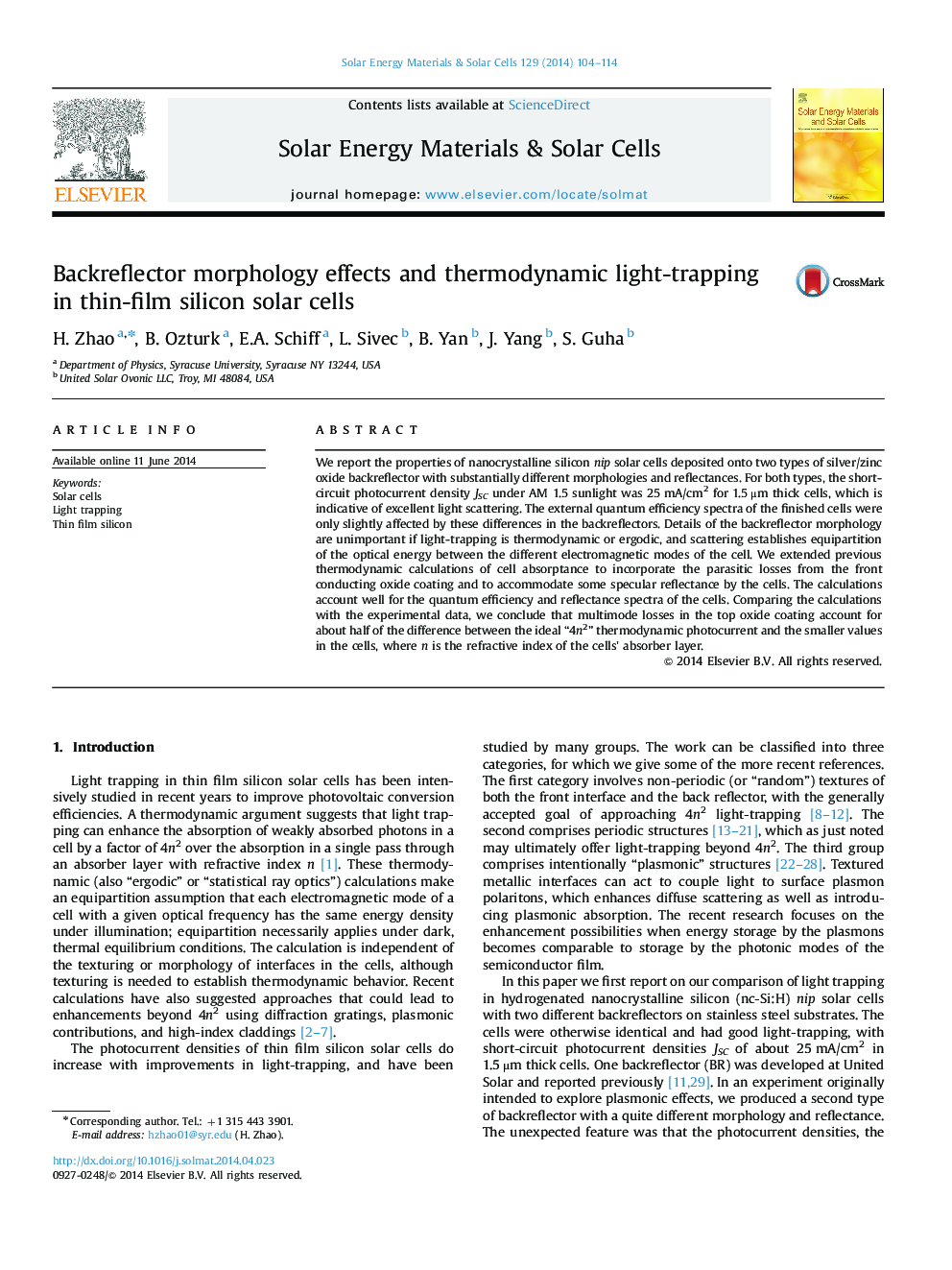| Article ID | Journal | Published Year | Pages | File Type |
|---|---|---|---|---|
| 78036 | Solar Energy Materials and Solar Cells | 2014 | 11 Pages |
•Thin film silicon solar cells were prepared with two types of backreflector.•Short-circuit photocurrent densities and quantum efficiencies were nearly the same.•Thermodynamic calculations of light-trapping agree with these measurements.•Front conducting oxide absorption diminishes light trapping substantially.•Backreflector scattering is nearly ideal with minor parasitic absorption.
We report the properties of nanocrystalline silicon nip solar cells deposited onto two types of silver/zinc oxide backreflector with substantially different morphologies and reflectances. For both types, the short-circuit photocurrent density JSC under AM 1.5 sunlight was 25 mA/cm2 for 1.5 μm thick cells, which is indicative of excellent light scattering. The external quantum efficiency spectra of the finished cells were only slightly affected by these differences in the backreflectors. Details of the backreflector morphology are unimportant if light-trapping is thermodynamic or ergodic, and scattering establishes equipartition of the optical energy between the different electromagnetic modes of the cell. We extended previous thermodynamic calculations of cell absorptance to incorporate the parasitic losses from the front conducting oxide coating and to accommodate some specular reflectance by the cells. The calculations account well for the quantum efficiency and reflectance spectra of the cells. Comparing the calculations with the experimental data, we conclude that multimode losses in the top oxide coating account for about half of the difference between the ideal “4n2” thermodynamic photocurrent and the smaller values in the cells, where n is the refractive index of the cells׳ absorber layer.
